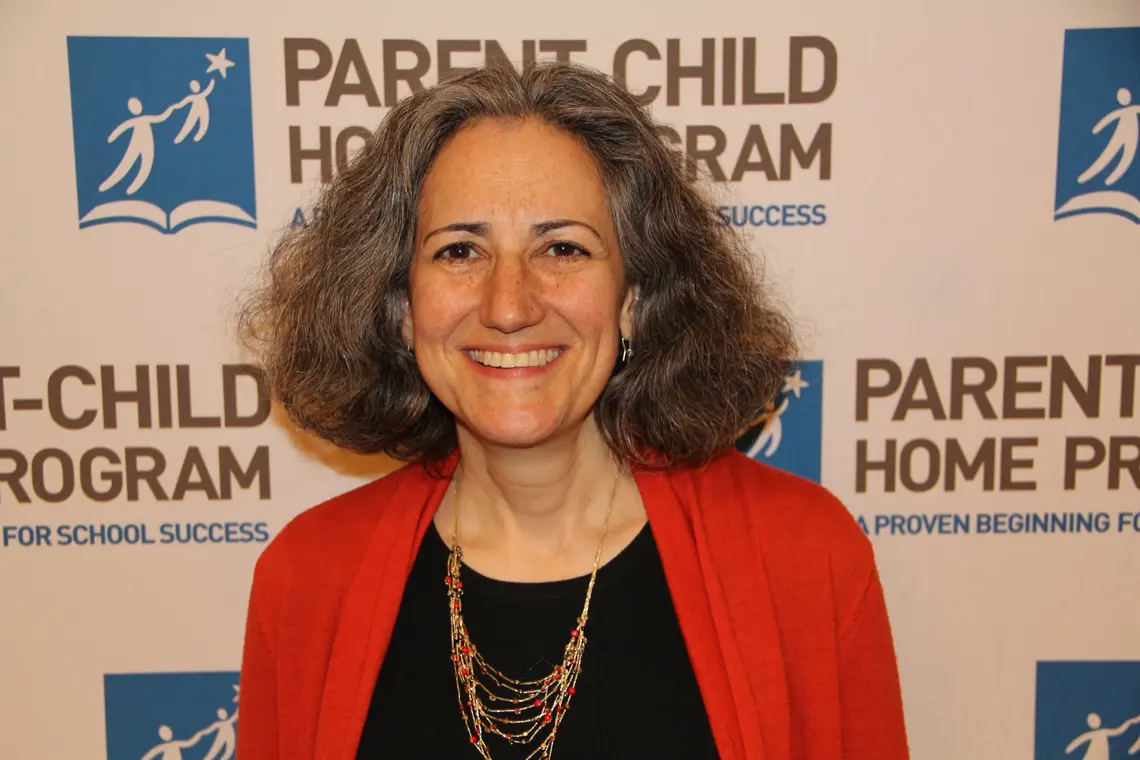Sarah Walzer ’82 Leads a Nonprofit That Prepares Children for School

For children who enter school behind, catching up is very difficult. Sarah Walzer ’82, the CEO of the Parent-Child Home Program, is working to eliminate this “preparation gap.” The intensive home visiting program gives families skills and materials to get their child ready for school and helps create a robust learning environment at home. For families who confront the challenges of poverty — isolation, lack of educational opportunities, lack of transportation to participate early childhood education — the program is often a first exposure to this access of knowledge and learning tools.
Walzer, a Woodrow Wilson School major at Princeton, worked on domestic public policy issues on Capitol Hill after graduation before going to law school and clerking. She returned to D.C. to work in public policy again and was soon connected to Parent-Child Home Program while working on a consulting project with one of the organization’s key funders.
When she joined the program, which began in 1965 as a research experiment in low-income communities on Long Island, Walzer was tasked with broadening the organization’s scope and creating a national center. Today, the program has 105 local partner agencies in the U.S. and four other countries. “Every five years it’s been a new job,” Walzer said.
How the program operates today is nearly identical to what it looked like in 1965: After connecting with families in the neighborhood, a community-based home visitor is sent to homes twice a week over a two-year period. Each week, they bring learning tool gifts — educational toys or books — which are often are the first reading material brought into the home. Visitors work with the parents, showing them how to read a story to build their child’s vocabularies and imaginative skills. “When they walk into the classroom, whether it’s a pre-K classroom or a kindergarten classroom, they are as ready as their middle-class peers,” Walzer said.
The end of third grade marks the point when students should be shifting from “learning to read” to “reading to learn,” Walzer said. Kids not reading on grade level by third grade at a significant disadvantage as they move through school. “Kids who get Parent-Child Home Program when they’re two or three, in their home with their parents, go on to graduate from high school with the rates of middle-class kids,” she said. This is a 20 percent higher graduation rate than expected for low-income children nationally.
“The reason we see this 16-year impact on kids in the program is not because a visitor came and read stories with them, but because of the skills and the knowledge the parents got that enabled them to be their child’s academic advocate and support,” Walzer said.
Today, 60 percent of families that the Parent-Child Home Program serves are immigrant or refugee families and non-native English speaking. Walzer said this is one of the wonderful ways the program has adapted over time — to be able to “embrace this population that faces some of the most significant challenges around getting ready to engage in the American school system.”









No responses yet